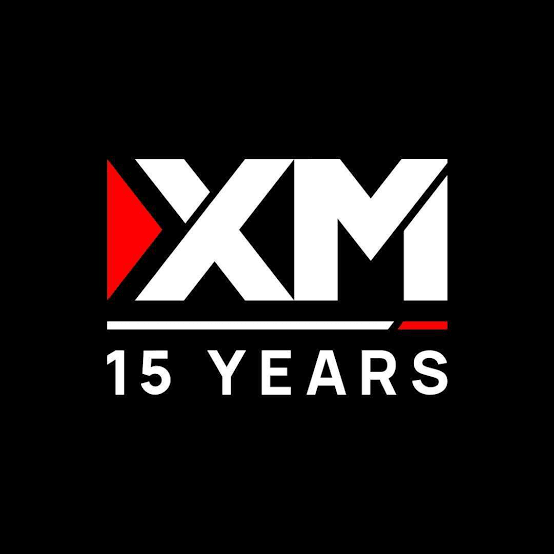The Complete Guide to Copy Trading
Learn how to automatically copy successful traders and potentially grow your investment portfolio without needing to become a trading expert yourself.
Start Copy Trading Today
1. What is Copy Trading?
Copy trading is a form of social trading that allows investors to automatically copy the trades of experienced and successful traders. Instead of making trading decisions yourself, you can select a trader to follow, and your account will automatically replicate their trading activity in real-time.
This innovative approach to investing has democratized financial markets, allowing beginners to participate in trading activities that were once reserved for professionals. With copy trading, you don't need extensive market knowledge or years of experience to potentially profit from financial markets.
History and Evolution
Copy trading emerged in the early 2000s alongside the development of social trading platforms. The concept gained significant traction after the 2008 financial crisis when retail investors sought alternative investment methods. Platforms like eToro, ZuluTrade, and Tradeo pioneered this space, creating ecosystems where traders could share their strategies and followers could automatically copy them.
Over the years, copy trading has evolved from simple trade copying to sophisticated systems that include risk management tools, performance analytics, and diversified copy portfolios. Today, it represents a multi-billion dollar industry with millions of users worldwide.
Key Terminology
Understanding copy trading requires familiarity with several key terms:
- Signal Provider: The trader whose trades are being copied
- Copier/Follower: The investor who copies the trades of signal providers
- Copy Ratio: The proportion of the signal provider's position size that is replicated in the copier's account
- Performance Fee: The percentage of profits that signal providers earn from their copiers
- Drawdown: The peak-to-trough decline during a specific period for a trading account
2. How Copy Trading Works
Copy trading platforms connect signal providers (experienced traders) with followers (investors who want to copy their trades). The process typically involves these steps:
Step-by-Step Process
- Registration: Both signal providers and followers create accounts on a copy trading platform.
- Verification: Users complete identity verification procedures as required by financial regulations.
- Funding: Followers deposit funds into their trading accounts.
- Selection: Followers browse through available signal providers, analyzing their performance metrics, risk levels, and trading strategies.
- Configuration: Followers set their copy trading parameters, including the amount to allocate, risk settings, and stop-loss limits.
- Execution: Once configured, the platform automatically replicates the signal provider's trades in the follower's account in real-time.
- Monitoring: Followers can monitor performance and make adjustments to their copy trading settings as needed.
Technical Infrastructure
Behind the scenes, copy trading platforms use sophisticated technology to ensure seamless trade replication:
| Component |
Function |
| API Integration |
Connects the platform to brokerages for real-time trade execution |
| Risk Management Engine |
Calculates position sizes based on follower's account balance and risk settings |
| Performance Analytics |
Tracks and displays key metrics for signal providers |
| Notification System |
Alerts users about important events like copied trades or strategy changes |
Types of Copy Trading
There are several variations of copy trading, each with distinct characteristics:
| Type |
Description |
Best For |
| Full Copy Trading |
Automatically copies all trades from a selected signal provider |
Beginners who want a hands-off approach |
| Partial Copy Trading |
Allows followers to copy only specific trades or set filters |
Intermediate users who want some control |
| Portfolio Copy Trading |
Copies multiple signal providers to create a diversified portfolio |
Risk-averse investors seeking diversification |
| Manual Copy Trading |
Followers manually replicate trades after receiving signals |
Advanced users who want complete control |
3. Benefits of Copy Trading
Copy trading offers numerous advantages for both novice and experienced investors:
Accessibility for Beginners
One of the biggest benefits of copy trading is that it lowers the entry barrier to financial markets. Beginners can start investing without needing to:
- Understand complex technical analysis
- Spend years learning trading strategies
- Monitor markets constantly
- Develop emotional control for trading
Time Efficiency
Copy trading saves significant time compared to traditional trading approaches. Instead of conducting market research and analysis, investors can leverage the expertise of professional traders who dedicate their full attention to trading.
Learning Opportunity
By observing the trading activities of experienced professionals, copy traders can learn about:
- Different trading strategies and styles
- Risk management techniques
- Market analysis approaches
- Emotional discipline in trading
Diversification
Copy trading platforms allow investors to follow multiple signal providers simultaneously, creating a diversified portfolio across different:
- Trading strategies (scalping, day trading, swing trading)
- Financial instruments (forex, stocks, commodities, cryptocurrencies)
- Market conditions (bull markets, bear markets, high volatility)
Emotional Detachment
One of the biggest challenges in trading is managing emotions like fear and greed. Copy trading removes emotional decision-making from the equation, as trades are executed automatically based on the signal provider's strategy.
Transparency
Copy trading platforms provide comprehensive performance data for all signal providers, including:
| Metric |
Importance |
| Historical Performance |
Shows how the trader has performed over time |
| Maximum Drawdown |
Indicates the largest peak-to-trough decline |
| Win Rate |
Percentage of profitable trades |
| Average Profit/Loss |
Shows typical trade outcomes |
| Risk Score |
Platform's assessment of the trader's risk level |
4. Risks and Challenges of Copy Trading
While copy trading offers many benefits, it's essential to understand the associated risks:
Performance Risk
Past performance is not indicative of future results. A signal provider with an excellent historical track record may underperform in changing market conditions.
Overconcentration Risk
Putting all your funds with a single signal provider exposes you to significant risk if that trader experiences a string of losses.
Strategy Mismatch
A trading strategy that works well for one investor might not align with another's risk tolerance or investment goals.
Technical Issues
Platform outages, execution delays, or connectivity problems can result in missed trades or unintended positions.
Hidden Costs
Beyond the performance fees paid to signal providers, copy traders may encounter:
- Spread costs (difference between bid and ask prices)
- Overnight financing fees (swap rates)
- Inactivity fees on some platforms
- Currency conversion fees for international traders
Risk Management Strategies
To mitigate these risks, successful copy traders implement several strategies:
| Strategy |
Description |
| Diversification |
Copy multiple signal providers with different strategies |
| Position Sizing |
Allocate only a small percentage of capital to each signal provider |
| Stop-Loss Orders |
Set automatic exit points to limit potential losses |
| Regular Monitoring |
Periodically review performance and make adjustments |
| Demo Account Testing |
Test copy trading strategies with virtual funds first |
5. Getting Started with Copy Trading
Beginning your copy trading journey involves several important steps:
Step 1: Education and Research
Before investing real money, take time to understand:
- Basic financial market concepts
- How copy trading platforms work
- Risk management principles
- Platform-specific features and fees
Step 2: Choosing a Platform
Select a copy trading platform that aligns with your needs. Consider factors like:
- Regulation and security
- Available financial instruments
- User interface and experience
- Fees and commission structure
- Quality and quantity of signal providers
Step 3: Account Setup
Complete the registration process, which typically includes:
- Providing personal information
- Verifying your identity (KYC process)
- Selecting account type and base currency
- Agreeing to terms and conditions
Step 4: Funding Your Account
Deposit funds using your preferred payment method. Most platforms offer multiple options:
| Payment Method |
Processing Time |
Typical Fees |
| Bank Transfer |
1-3 business days |
Varies by bank |
| Credit/Debit Card |
Instant |
0-3% |
| E-wallets (PayPal, Skrill) |
Instant to few hours |
1-2% |
| Crypto Transfer |
10-60 minutes |
Network fees |
Step 5: Starting with a Demo Account
Most reputable platforms offer demo accounts with virtual funds. Use this to:
- Familiarize yourself with the platform interface
- Test different signal providers without risk
- Understand how copy trading parameters work
- Develop your selection strategy
[Image: Screenshot showing a demo account interface with virtual balance and copy trading features]
Step 6: Transitioning to Live Trading
When moving to real money trading, follow these best practices:
- Start with a small amount you can afford to lose
- Diversify across multiple signal providers
- Set conservative risk parameters initially
- Monitor performance closely in the beginning
6. How to Choose Traders to Copy
Selecting the right signal providers is crucial for copy trading success. Here are key factors to consider:
Performance Metrics
While past performance doesn't guarantee future results, these metrics provide valuable insights:
| Metric |
What to Look For |
Red Flags |
| Profitability |
Consistent profits over an extended period (6+ months) |
Recent huge gains after long periods of losses |
| Maximum Drawdown |
Below 20% for conservative strategies |
Drawdowns exceeding 50% |
| Win Rate |
Above 50% for most strategies |
Extremely high win rates (may indicate risky strategies) |
| Average Profit/Loss |
Profit factor above 1.5 |
Negative average profit per trade |
| Number of Trades |
Enough trades to establish a pattern (100+) |
Very few trades (statistically insignificant) |
Trading Style Compatibility
Ensure the signal provider's trading style aligns with your:
- Risk Tolerance: Conservative, moderate, or aggressive
- Time Horizon: Day trading, swing trading, or position trading
- Market Focus: Forex, stocks, commodities, or cryptocurrencies
Transparency and Communication
Look for signal providers who:
- Clearly describe their trading strategy
- Regularly update their profile with market insights
- Respond to follower questions
- Notify followers about strategy changes
Portfolio Diversification
When building your copy trading portfolio, consider including signal providers with:
- Different trading strategies (technical, fundamental, sentiment-based)
- Varied market focuses (forex, indices, commodities)
- Different timeframes (scalpers, day traders, swing traders)
- Various risk profiles (conservative, moderate, aggressive)
Due Diligence Checklist
Before copying any trader, complete this checklist:
- Review at least 6 months of verified performance history
- Analyze drawdown periods and recovery time
- Check the consistency of returns (avoid traders with one huge winning trade)
- Verify the number of copiers and their satisfaction ratings
- Read the trader's strategy description and recent updates
- Start with a small allocation to test compatibility
7. Copy Trading Strategies
Successful copy traders employ various strategies to optimize their results:
Portfolio Diversification Strategy
This approach involves copying multiple signal providers to spread risk:
- Allocation Method: Distribute funds across 5-10 different signal providers
- Selection Criteria: Choose traders with different strategies, markets, and timeframes
- Rebalancing: Periodically review and adjust allocations based on performance
Core-Satellite Strategy
This hybrid approach combines conservative and aggressive elements:
- Core (70-80%): Allocated to proven, conservative signal providers with long track records
- Satellite (20-30%): Allocated to higher-risk, potentially higher-reward signal providers
Risk-Adjusted Allocation Strategy
This method allocates capital based on each signal provider's risk metrics:
| Risk Level |
Maximum Allocation |
Drawdown Limit |
| Low Risk |
Up to 30% of portfolio |
10% maximum drawdown |
| Medium Risk |
Up to 20% of portfolio |
20% maximum drawdown |
| High Risk |
Up to 10% of portfolio |
30% maximum drawdown |
Performance-Based Rotation Strategy
This active approach involves regularly rotating among top-performing signal providers:
- Evaluation Period: Assess performance quarterly or monthly
- Selection Criteria: Rank signal providers based on recent performance and risk-adjusted returns
- Implementation: Allocate more capital to top performers and reduce exposure to underperformers
Market-Condition Strategy
This sophisticated approach involves selecting signal providers based on market environments:
- Trending Markets: Follow trend-following strategies
- Ranging Markets: Follow mean-reversion strategies
- High Volatility: Follow volatility-based strategies
- Low Volatility: Follow breakout strategies
Risk Management Techniques
Regardless of your chosen strategy, implement these risk management practices:
- Position Sizing: Never allocate more than 5-10% of your capital to a single signal provider
- Stop-Loss Orders: Set maximum loss limits for each copied trader
- Correlation Analysis: Avoid copying traders with highly correlated strategies
- Regular Review: Monitor performance and make adjustments as needed
8. Best Copy Trading Brokers
Choosing the right broker is essential for copy trading success. Here's a comprehensive comparison of top copy trading brokers:
Comprehensive Broker Comparison
| Broker |
Minimum Deposit |
Copy Trading Fees |
Available Markets |
Platform Features |
Regulation |
| Deriv |
$5 |
No additional copy fees |
Forex, Commodities, Cryptocurrencies, Indices |
Social trading integration, Performance analytics |
MFSA, VFSC, FSA |
| HFM |
$5 |
No copy fees, standard spreads apply |
Forex, Stocks, Commodities, Indices, Cryptocurrencies |
HF Copy, Advanced risk management |
CySEC, FCA, DFSA, FSCA |
| Exness |
$1 |
No copy fees |
Forex, Metals, Cryptocurrencies, Energies, Indices |
Social Trading tab, Copy trading statistics |
CySEC, FCA, FSC, FSCA |
| AvaTrade |
$100 |
No copy fees |
Forex, Stocks, ETFs, Commodities, Indices, Cryptocurrencies |
DupliTrade, ZuluTrade, Mirror Trader |
Central Bank of Ireland, ASIC, FSCA, FSA |
| XM |
$5 |
No copy fees |
Forex, Stocks, Commodities, Equity Indices, Precious Metals |
XM CopyTrading, Real-time performance stats |
ASIC, CySEC, IFSC |
Detailed Broker Reviews
Deriv
Deriv offers a user-friendly copy trading experience with low barriers to entry. Their platform integrates social trading features that allow users to follow and copy successful traders seamlessly.
Key Features:
- Low minimum deposit of $5
- Wide range of tradable assets
- No additional fees for copy trading
- Comprehensive performance analytics
- User-friendly interface suitable for beginners
HFM
HFM provides advanced copy trading through their HF Copy platform, offering sophisticated risk management tools and a diverse selection of signal providers.
Key Features:
- Multiple regulation from reputable authorities
- Advanced risk management settings
- Wide variety of financial instruments
- Detailed performance statistics for signal providers
- Negative balance protection
Exness
Exness stands out with its extremely low minimum deposit requirement and robust social trading features integrated directly into their trading platform.
Key Features:
- Minimum deposit as low as $1
- Instant withdrawal processing
- Comprehensive copy trading statistics
- Multiple account types to suit different traders
- Strong regulatory oversight
AvaTrade
AvaTrade offers multiple copy trading solutions through partnerships with leading social trading platforms, providing flexibility and choice for investors.
Key Features:
- Integration with DupliTrade, ZuluTrade, and Mirror Trader
- Wide range of tradable assets including ETFs
- Strong regulatory framework
- Educational resources for copy traders
- Advanced risk management tools
XM
XM's copy trading platform offers real-time performance statistics and a diverse selection of signal providers across various trading styles and risk profiles.
Key Features:
- Low minimum deposit requirement
- Real-time performance monitoring
- Negative balance protection
- Multiple regulatory licenses
- Free educational resources
10. Taxes and Legal Considerations
Copy trading has specific tax implications that vary by jurisdiction. Understanding these is crucial for compliance and accurate financial planning.
Tax Treatment by Country
| Country |
Tax Treatment |
Reporting Requirements |
| United States |
Capital gains tax, Section 1256 contracts |
Form 8949, Schedule D |
| United Kingdom |
Capital gains tax, Spread betting tax-free |
Self-assessment tax return |
| Australia |
Capital gains tax, treated as business if frequent trading |
Tax return with capital gains schedule |
| Germany |
Capital gains tax (flat rate), tax-free allowance |
Annual tax declaration |
| Canada |
50% of capital gains included in income |
Schedule 3 of tax return |
Record Keeping
Maintain detailed records of your copy trading activities, including:
- All deposits and withdrawals
- Copied trades with dates and amounts
- Performance fees paid to signal providers
- Platform fees and commissions
- Profit and loss statements
Legal Considerations
Be aware of these legal aspects of copy trading:
- Regulatory Compliance: Ensure your broker is properly regulated in your jurisdiction
- Investor Protection: Understand what protections are available if the platform fails
- Dispute Resolution: Know the process for resolving issues with signal providers or the platform
- Terms of Service: Read and understand the platform's terms, especially regarding liability and arbitration
11. The Future of Copy Trading
Copy trading continues to evolve with technological advancements and changing market dynamics. Here are key trends shaping its future:
Artificial Intelligence Integration
AI is transforming copy trading in several ways:
- Signal Provider Selection: AI algorithms can analyze thousands of traders to identify the most consistent performers
- Risk Assessment: Machine learning models can predict drawdown probabilities and optimize portfolio allocation
- Market Analysis: AI can identify changing market conditions and suggest appropriate strategy adjustments
Blockchain and Decentralized Platforms
Blockchain technology is enabling new copy trading models:
- Transparency: Immutable records of all trades and performance data
- Smart Contracts: Automated execution of performance fee payments
- Tokenization: Creating tradeable tokens based on trading performance
Regulatory Developments
As copy trading grows, regulators are developing specific frameworks:
- Enhanced Disclosure Requirements: More transparent reporting of performance metrics
- Signal Provider Certification: Potential licensing requirements for professional signal providers
- Risk Warnings: Standardized risk disclosures for copy trading participants
Personalization and Customization
Future platforms will offer more personalized copy trading experiences:
- Custom Strategy Creation: Combining elements from multiple signal providers
- Dynamic Allocation: Automatic adjustment of allocations based on performance and market conditions
- Goal-Based Copying: Matching signal providers to specific financial objectives
12. Frequently Asked Questions
Is copy trading profitable?
Copy trading can be profitable, but it's not guaranteed. Success depends on selecting the right signal providers, proper risk management, and market conditions. Historical data shows that a well-diversified copy trading portfolio can generate returns, but past performance doesn't guarantee future results.
How much money do I need to start copy trading?
Many copy trading platforms have low minimum deposit requirements, some as low as $5-$100. However, to properly diversify across multiple signal providers, a starting capital of $500-$1,000 is recommended.
Can I lose money with copy trading?
Yes, copy trading involves risk, and you can lose money. Markets can be unpredictable, and even successful signal providers can experience losing periods. Proper risk management, including diversification and stop-loss orders, is essential to limit potential losses.
How do signal providers make money?
Signal providers typically earn a performance fee based on the profits they generate for their copiers. This fee is usually a percentage of the profits (commonly 10-30%) and is automatically deducted from copiers' accounts.
Can I stop copy trading at any time?
Yes, you can typically stop copy trading at any time. Most platforms allow you to discontinue copying a signal provider with a single click. However, note that any open positions will remain in your account until you close them manually or they reach their take-profit/stop-loss levels.
Is copy trading suitable for beginners?
Copy trading can be suitable for beginners as it doesn't require extensive market knowledge. However, beginners should still educate themselves about basic risk management principles and start with a demo account before investing real money.
How many signal providers should I copy?
Most experts recommend copying 5-10 signal providers to achieve proper diversification. Copying too few increases concentration risk, while copying too many can make it difficult to monitor performance effectively.
What is the difference between copy trading and mirror trading?
Copy trading involves replicating the specific trades of individual traders, while mirror trading typically involves copying predefined trading strategies or systems rather than individual traders' discretionary decisions.
Conclusion
Copy trading represents a significant innovation in the world of investing, democratizing access to financial markets and allowing inexperienced traders to potentially benefit from the expertise of professionals. While it offers numerous advantages, including time efficiency, learning opportunities, and accessibility, it's not without risks.
Success in copy trading requires careful selection of signal providers, proper diversification, disciplined risk management, and ongoing monitoring. By understanding the concepts, strategies, and platforms discussed in this guide, you'll be better equipped to navigate the world of copy trading and make informed decisions that align with your financial goals and risk tolerance.
Remember that all trading involves risk, and it's important to only invest money you can afford to lose. Start with a demo account, educate yourself continuously, and consider consulting with a financial advisor if you're unsure about any aspect of copy trading.




